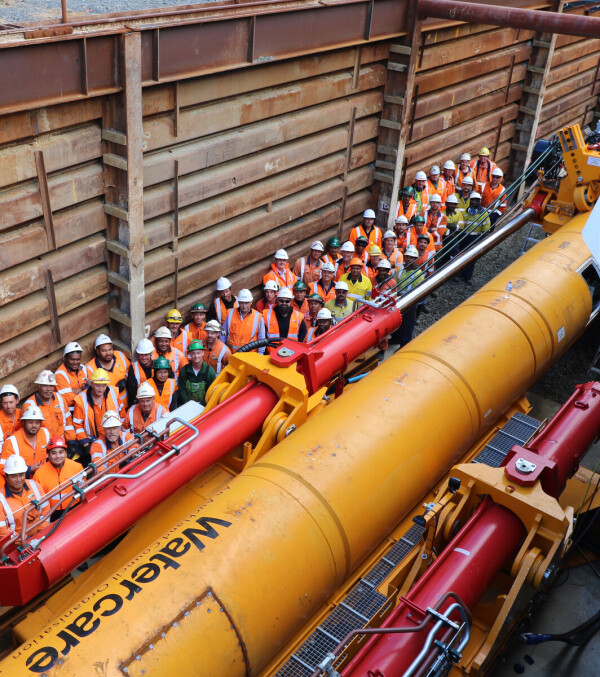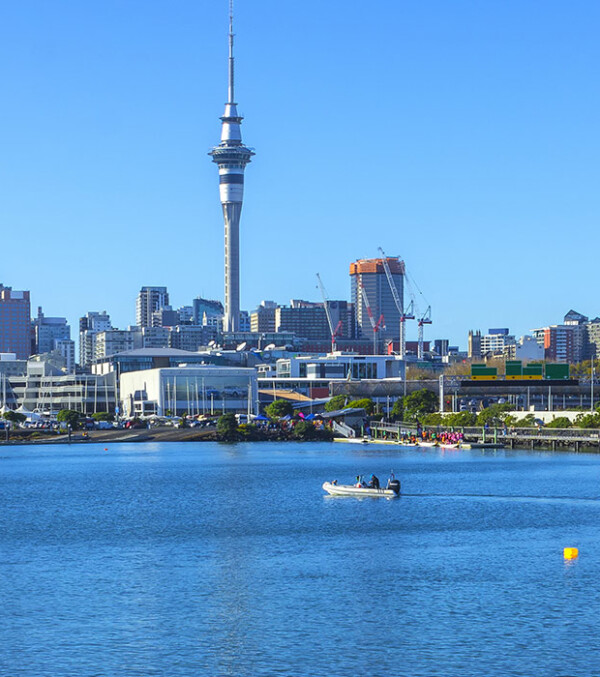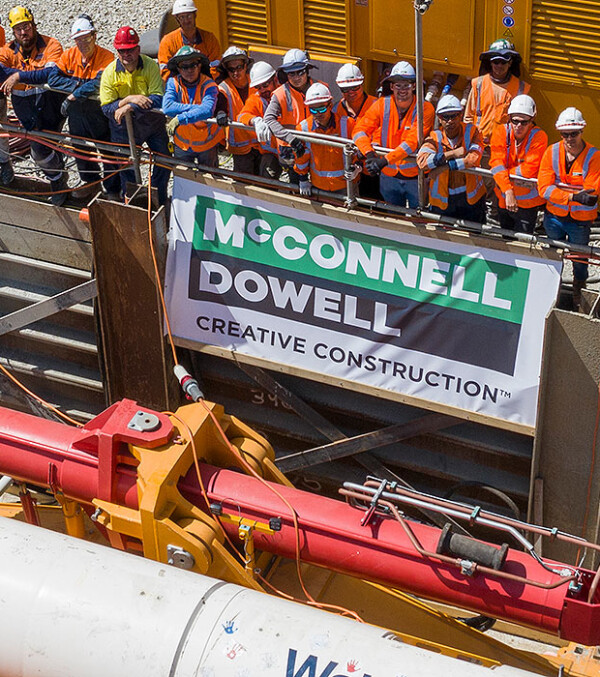|
Customer: Westland Dairy Company Ltd Contract: Design & Construct Location: Hokitika, Westland
|
Fast Facts
|
We completed the first-ever ocean outfall on the rugged west coast of New Zealand’s South Island, successfully dealing with extreme weather, avoiding dolphins and penguins, and managing the challenging marine environment. This landmark project has significantly improved water quality in the Hokitika River.
Westland Cooperative Dairy Company Ltd appointed us to design and construct the 844 m long ocean outfall pipeline to stop the discharge of treated wastewater from their facility into the River.
Our project connects to a new four-kilometre wastewater pipeline, extending from the dairy facility through the Hokitika township.
Our scope of works included:
- construction of a sheet piled launch trench 60 m long, 6 m wide and 7.5 m deep,
- an 844 m Micro Tunnel Boring Machine (MTBM) drive, 23 m below the seabed
- installation of an 835 m long High-Density PolyEthylene (HDPE) liner into the steel carrier pipe submerged at the seaward end
- retrieval of the MTBM 750 m offshore and 4 m below the seabed
- installation of the diffuser structure beneath the seabed
- installation of deaeration chamber on the foreshore launch site
- onshore connection of the new pipeline to the deaeration chamber
The challenge
The weather and sea conditions on the West Coast of New Zealand especially on the South Island is known to be very challenging. The average rainfall is in the order of 2,832 mm per year or 236 mm per month and the sea swell height can reach four metres at times which required additional stormwater management onshore and marine operations management offshore.
Another challenge was to minimise disturbance to the foreshore and dune area to protect the population of Little Blue Penguins on the Western Coast and Hector Dolphins. This was coupled with tunnelling through unfamiliar ground conditions including gravel, cobbles, silts, clays and sands.
The solution
To ensure that there would be minimal disturbance to the foreshore and the dune area where the Little Blue Penguins are known to nest, the Direct Pipe® methodology was chosen in preference to HDD or conventional outfall construction techniques. Older conventional techniques are no longer acceptable in valuable sensitive environs and the likelihood of hydraulic frac-out, bore collapse or drilling difficulty with HDD was considered much too great to risk.
To complete the Westland Milk Outfall, we utilised specialist mass flow excavation equipment sourced from Malaysia. To expose the TBM the mall flow excavation tool was lifted off the barge and lowered beneath the sea where it blew out the sands and gravels from around the TBM using high pressure water. This method was chosen to mitigate the impact on the delicate ecosystem and local environment. Once completed, the dive team then repeated the steps from previous McConnell Dowell projects to disconnect the MTBM and utilise the Pontoon previously used at both the Snells Algies and Army Bay projects' to retrieve it. An 18 nautical mile tow was completed back to Greymouth Port which it was lifted from the water.
Key to success
Our team incorporated whole of life outcomes and embedded a strong focus on the local community and environment in both the design and construction phase. This enabled the team to ensure quality, by development of innovative methodologies to reduce risk. Key tunnelling team members from previous Direct Pipe® projects joined the project team to ensure continuous improvement. This resulted in best performance records to date in Direct Pipe® productivity with the 844m tunnel drive completed in just over one month!
The Westland Milk Project was the successful winner of 'Category D' (projects in excess of $5million) at the Civil Contractors New Zealand’s Canterbury/Westland Branch 2021 Excellence Awards












